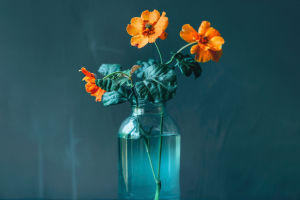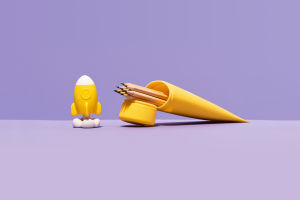Flower art is a skill full of artistry and creativity.
In flower art creation, the selection of flowers, the matching of colors, and the overall composition are all crucial.
In this process, the number and proportion of flowers also play an indispensable role. Whether it is the pursuit of complex layering or simple elegance, the combination of the right number of flowers and design concepts can add a unique charm to each flower artwork.
The selection of flowers is the first step in flower art creation. Different kinds of flowers have different colors and forms, which bring completely different visual effects.
When choosing appropriate flowers, we should not only consider their beauty but also their matching and proportion in the whole design. For example, in a flower artwork dominated by bright colors, if a single type of flower is used too much, the overall effect may be monotonous.
On the contrary, the appropriate addition of several flowers of different colors and forms can enhance the layering and visual impact of the work, allowing the viewer's eyes to linger on the piece.
The number of flowers is also a very important factor in flower art design. The number of flowers is closely related to the relationship with space. In a smaller space, using too many flowers may make the overall effect look crowded and cover up the beauty of the flowers.
Therefore, in flower art creation, it is essential to control the number of flowers and make them coordinate with the surrounding environment.
A moderate number of flowers can create a comfortable visual atmosphere and highlight the unique beauty of each flower, allowing people to unconsciously appreciate their delicacy and elegance.
In the pursuit of simple beauty, the matching and layout of flowers are particularly important. Simple flower art design usually focuses on a single or a small number of flowers, showing natural and harmonious beauty through careful matching and composition.
For example, in a bouquet dominated by white lilies, some elegant green plants are matched to highlight the purity of the lilies while adding a touch of vitality to the overall design. This simple yet expressive matching method reflects the design concept of "less is more," providing a peaceful visual experience.
The use of colors in flower art creation also directly affects the overall effect of the work. In the selection of flowers, similar colors or complementary colors can be used to create different atmospheres.
The combination of similar colors can give a soft feeling, suitable for warm occasions, while the use of complementary colors can create a strong contrast, ideal for works expressing vitality and passion. In flower art creation, the designer's emotions and thoughts can be better conveyed through appropriate color matching.
In the process of flower art creation, the seasonality and sustainability of flowers must also be considered. Choosing seasonal flowers ensures the freshness and beauty of the flowers and helps them integrate with the natural environment.
For example, in spring, flowers such as cherry blossoms and tulips perfectly reflect the vitality of the season, while in autumn, chrysanthemums and osmanthus show the deep feeling of autumn.
Thus, the choice of flowers in flower art creation should be adjusted according to seasonal changes to ensure that each work matches the rhythm of nature.
Flower art creation is not just about combining flowers; it is also an expression of emotions. Every bouquet carries the designer's mood and thoughts. In the creative process, designers need to explore and innovate, finding a balance in quantity and proportion to ensure the beauty of each flower is fully displayed.
Through the careful selection and matching of flowers, designers can not only create visual enjoyment but also convey emotional resonance, making each piece a unique work of art.
In flower art creation, the quantity and proportion of flowers are crucial. Through proper flower matching and appropriate quantity control, harmonious beauty can be achieved, and each work can be full of vitality and soul.
Whether it is the pursuit of complex layering or simple elegance, the core of flower art lies in the designer's understanding and appreciation of beauty. This pursuit of details and love for art allows each bouquet to bloom with unique brilliance, becoming a beautiful and indispensable element in life.


